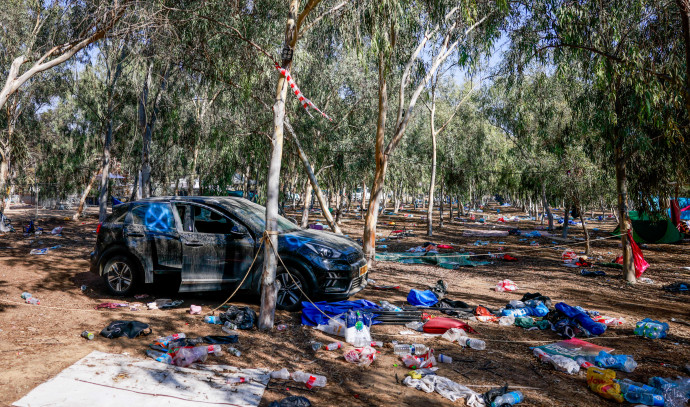In the nineteenth century, when a character had premarital sex, you held your breath not for an abortion but for a wedding. Think of “Pride and Prejudice,” where Lydia’s child marriage comes as a great relief. The marriage plot relegates the actual having of children to the last page, just after the rice is thrown and the reader assured that our heroine will be happy and rich. If great Western literature of the time does allude to abortion, it does so subtly or with plausible deniability. The first time I read “War and Peace,” I managed to miss the suggestion that Hélène died of an overdose of abortifacient drugs. In “Middlemarch,” when Rosamond goes horseback riding against the explicit wishes of her doctor husband and subsequently miscarries, Eliot hastens to explain that this was a “misfortune” and that “there were plenty of reasons why she should be tempted to resume her riding.”
Of course, plenty of nonfictional women in the nineteenth century were having abortions. In the U.S., at least, contraception was crude, childbirth was dangerous, food was expensive, and abortion before quickening—the moment when the fetus is first felt to move—was less legally controversial than it is now, though also apparently less likely to be named outright. (Euphemisms included “taking the trade” and “restoring the menses.”) American literature took a while to say the unsayable. Writing students today still learn about understatement from Ernest Hemingway’s “Hills Like White Elephants,” a brief conversation between two lovers who refer only to “an awfully simple operation” that will “let the air in.” In 1917, Edith Wharton dipped a toe in the abortion plot with “Summer,” a novel about a young woman named Charity who visits a money-hungry doctor for an abortion—the actual word is never said—before quickly deciding that “it was impossible to tear asunder strands of life so interwoven.” Keeping the fetus would typically doom Charity to a life of poverty and prostitution, but, at the last minute, Wharton saves the day by marrying her off to her foster father.
By the nineteen-fifties, abortion was not only named in literature, but debated at philosophical length. In Saul Bellow’s “The Adventures of Augie March” (1953), the question is whether or not life in general is worth living. “You don’t know how lucky you are,” Augie’s pregnant roommate imagines saying to her aborted fetus. “What makes you think you would have liked it?” In Richard Yates’s “Revolutionary Road” (1961), Frank Wheeler describes the moment that he persuades his wife, April, not to abort her first pregnancy as his life’s greatest “proof of manhood.” But he is unable to convince her that she shouldn’t abort her third. “Don’t ‘moral’ and ‘conventional’ really mean the same thing?” April asks, a few weeks before she dies of an at-home abortion. Yates gives us April’s calm preparations: her boiling of the syringe, her writing down of the hospital’s phone number. But we are not privy to the ins and outs of the abortion itself: Yates draws a decorous curtain around the rest of the scene.
In the following years, the literary taboo on putting a desexualized vagina on the page would weaken, notably with the portrayal of a diaphragm fitting in Mary McCarthy’s “The Group” (1963) and a tampon insertion in Doris Lessing’s “The Golden Notebook” (1962). McCarthy’s scene, first published as the short story “Dottie Makes an Honest Woman of Herself,” is famous not only as literature but as sex education: in “Goodbye, Columbus,” Philip Roth’s young protagonist explains that, though he’s never before procured birth control, he has “read Mary McCarthy.”
“Cleaned Out,” Annie Ernaux’s 1974 fictionalization of her own illegal abortion, points to the lack of an equivalent literary handbook for abortion, even as it is one. Denise, the well-read protagonist, has her feet against the wall with a tube deep inside her; every hour she does scissor movements to bring on the abortion. Nothing she’s read up to now seems to offer any guidance. “There is supposed to be a prayer to suit every occasion,” she laments. “There should be one for a girl of twenty who’s just had a backstreet abortion, what she thinks as she comes out, walks home, and throws herself onto her bed. That one I’d need over and over again.”
“January,” by the Argentinean author Sara Gallardo, is just what Denise wanted to read, though the novel—which was originally published in 1958, never translated into French and appears only now in English, is unlikely to have reached Ernaux. It was, however, influential in Latin America: Gallardo went on a book tour to Chile, Peru, Mexico, and Cuba. Argentinean feminists, who in 2020 won the right to legal abortion nationwide during the first fourteen weeks of pregnancy (a slightly more restrictive line than the one at issue in Dobbs) still reference “January” as a turning point in the nation’s consciousness. Gallardo, a writer of terrifying intelligence, wrote the book when she was in her early twenties.
Our unlikely hero, Nefer, is a sixteen-year-old living under feudal conditions in rural Argentina. Dimly, she recalls being raped at her sister’s wedding: having dolled herself up to impress Negro, a milk-monger who takes no notice of her, she was instead taken, crying, into the woods by a drunken older man. (In Argentina, “el negro,” pronounced with a short “E,” can be a friendly way to refer to a man with darker hair or skin.) Now Nefer is stuck between the childish delusion that the pregnancy will somehow make Negro love and marry her and the desire to get rid of the thing “growing inside her like a dark mushroom.”
The abortion plot frequently uses months or seasons to locate a pregnancy along a symbolic time line of unwanted ripening. (Consider Wharton’s “Summer,” or Yates’s April, or the protagonist of the movie “Never Rarely Sometimes Always,” who is eighteen weeks along and named Autumn.) Here, January—summer in the Southern Hemisphere—represents Nefer’s last chance to interrupt the seed’s growth. Soon it will be harvest time, and “there’ll be no turning back.” Nefer, who for most of the book is unable to remember the word “abortion,” nevertheless attempts to induce one several times. In the horse-centric culture of the Pampas, her first idea is to gallop hard. This failing, she sneaks out during the siesta to visit the local witch doctor but, once there, finds herself unable to ask for what she wants. “People have told me that my characters don’t fight for anything, that they are defined by inertia,” Gallardo said in a 1977 interview with the Argentinean novelist Reina Roffé. “They just know that one can’t fight against adversity or a broken heart.”
Gallardo herself was not so powerless. Born in 1931 in Buenos Aires into a storied lineage of intellectuals—her great-great-grandfather, Bartolomé Mitre, was a President of Argentina—she spent much of her childhood surrounded by books. At twenty-one, against the wishes of her father, she declared her intention to write for La Nación, one of the country’s leading newspapers. She married twice and had four children, including one who died very young. “Motherhood was so important,” she later said, “that it made the arrival of the book seem like a plain fact.” She died at fifty-six, of an asthma attack, leaving behind a body of work that has recently enjoyed a revival in the Spanish-speaking world. Her fiction includes “Los galgos, los galgos,” a novel of decadent love that has not yet been translated into English, and “Land of Smoke,” a collection of dystopian stories, whose blasé violence and clipped lyricism are a clear influence on the contemporary Argentinean writer Samanta Schweblin. Among American writers, Gallardo has been compared to Lucia Berlin or Shirley Jackson, two writers whose work is also undergoing a posthumous reëvaluation.







